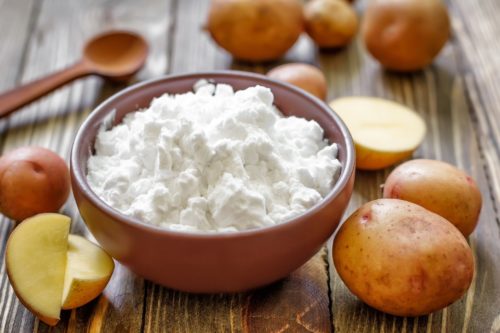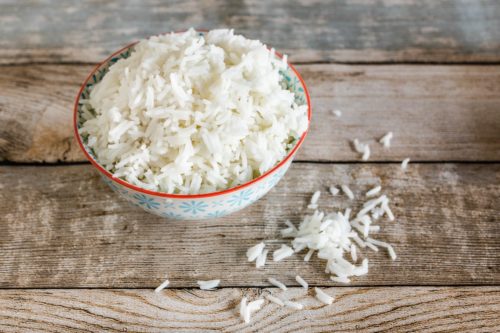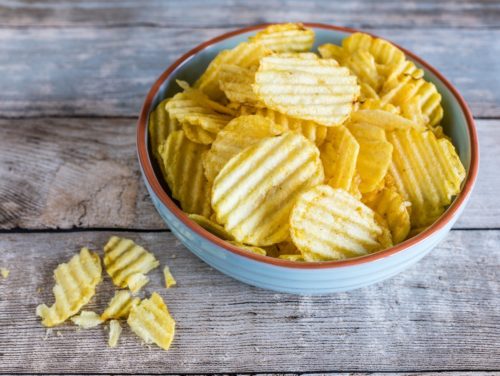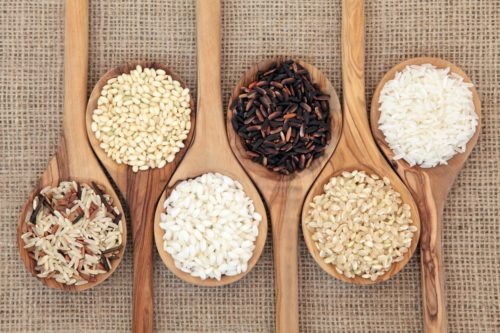
For a long time, scientists knew and reported about five taste receptors on the human tongue (well, umami was also a fairly recent discovery):
- Sweet (simple sugars, sweeteners, sweet amino acids)
- Salt
- Sour (acids)
- Bitter
- Umami, also known as Savory (amino acids and L-glutamate from meat, mushrooms, etc.)
These taste receptors are not only for our enjoyment but to help humans and other animals detect novel foods that are safe to eat (such as sweet fruit) or poisonous (many poisonous plants are bitter). However, they also serve another function. They help stimulate the brain and nervous system to send signals to the digestive system that a particular type of food is coming and it should begin making enzymes and hormones to digest, and then utilize, that food!
When the sweet receptors on the tongue are stimulated by simple sugars, monosaccharides and disaccharides, scientists have recently shown that this stimulates the release of insulin from the pancreas. In fact, if you inject a simple sugar directly into the blood stream of a person, it will take longer to stimulate the release of insulin than if you just let them taste the simple sugar on the tip of their tongue and then immediately spit it out!
This remarkable discovery was published by a team of nutrition scientists at Oregon State University in late July, 2016. You can read the abstract online, but unfortunately, the full paper is not available online for free.
While the discovery above is extremely interesting, it was kind of buried in the main purpose of the research which was to test if the human tongue has taste receptors for “starch.” Well, technically, they were not looking for receptors for starch, as this molecule is way too large and bulky to interact with taste receptors.
BUT, it turns out that as amylase begins to break down these huge starch molecules, some of the intermediate molecules between starch and maltose can be detected by taste receptors! The scientists knew they weren’t being detected by the sweet receptors on the tongue because they used a substance called lactisole to block the sweet receptors as people tasted their “maltodextrin concoction”.

When starch is being broken down, you get mostly dextrin at first, intermediately sized derivatives of starch. As these get chopped up more, shorter intermediates are formed. Most of these are called maltodextrin. Maltodextrin has between three and twenty carbons in the chain.
You also get some maltose produced. This is a simple sugar consisting of two glucose molecules bonded together. Your sweet receptors CAN detect maltose but maltose is nowhere near as sweet as sucrose, fructose, or glucose. If sucrose (table sugar) gets score 1 for observed sweetness, maltose gets only 0.33.
It turns out that taste receptors, other than the ones previously discovered, and NOT the sweet receptors, are able to detect the maltodextrin intermediates. Not only that, the people who detected them, with their sweet receptors turned off, described them as pleasant tasting and “starchy.” Now that this discovery has been made, it seems so obvious that humans, and other animals that eat plants, would need to be designed to detect starch derivatives in the mouth.
It would certainly be advantageous since starch is one of the main food sources available in nature. However, no one even thought to look before because the starch molecule was just too big and complex to be detected by our taste receptors! It just took a little deeper thinking to realize that these ginormous starch molecules are almost immediately broken down into much smaller parts (at least partly so) when we chew our food and they interact with amylase. These smaller parts are small enough to interact with a taste receptor.
It stands to reason too that if stimulation of the sweet receptors stimulates insulin production, before the food even leaves the mouth, that stimulation of these newly discovered “starch” receptors may trigger certain enzymes to be produced in the small intestine in anticipation of what’s needing to be digested.
Look for new research to be conducted on this in the very near future! Remember when your mom told you to slow down and chew your food more when eating? Looks like she was right. It looks like chewing longer improves digestion in more ways than one.

The food industry has been very sneaky about this in that they add maltodextrin to many processed foods, especially junk foods like potato chips, soft drinks, candy, and granola bars (many of these are no more nutritious than a candy bar!). No wonder we get so addicted without knowing why. It looks like we may not be just addicted to simple sugars but to the maltodextrin added! If maltodextrin is reacting with our taste receptors, that could be lighting up the pleasure portion of the brain just like sugar. This discovery may have all sorts of important implications to our health so pay attention to research that is bound to come out on this in the near future.
Try This Fun Experiment
This is truly a fun thing to do and will demonstrate how the digestion of starches work better than anything we could write! Get your kids, significant other, other family, and friends in on this as it makes it even funnier when you can compare notes and see the expression on other people’s faces. You could try it with unbuttered unsalted popcorn on the next movie night too.
To prepare for this experiment, carefully brush and floss your teeth to remove all food particles that may be lurking. Be sure to rinse your mouth out thoroughly with plain water after brushing your teeth so that any food particles you have dislodged will be rinsed out. Wait at least one hour before you start the experiment.
Take a bite of plain cooked white rice with no other food on it. Chew it slowly to masticate it well but do not swallow it. Instead, hold the chewed rice in your mouth longer than you would normally do. Let the saliva flow freely in your mouth and use your tongue to mix the chewed rice with your saliva. Make sure the chewed rice comes into contact with the front one-third of your tongue as well as the edges of your tongue.
Do you notice any changes in the taste of the rice the longer you hold it in your mouth? Does it become sweeter (subtly so)? Do you notice any other new flavors?
We picked white rice for this experiment because it is nearly pure starch, a highly complex branched polymer consisting of thousands of glucose molecules. A cup of short-grained cooked white rice consists of more than 95 % pure starch and only 0.2 % simple sugars. The other 4.8 % is fiber. Other complex carbs like potatoes or white bread are also composed mostly of starch. However, they have a bit more sugar mixed in and we wanted you to start with a bite of almost pure starch.
Initially, white rice will probably taste rather bland to you. That’s because the highly convoluted ginormous starch molecules cannot be detected by the taste receptors in the taste buds of your tongue… they’re just way too big and bulky. However, the longer rice stays in your mouth, the more the amylase in your spit has a chance to break down the complicated starch molecule. As this happens, you should get molecules of maltose and maltodextrin forming! You can think of this as an invisible magic trick.
Some of the starch molecules will be broken down into maltodextrin molecules with three to twenty carbon atoms. As noted above, these should stimulate the newly discovered receptors that detect starch oligosaccharide derivatives (maltodextrin and maltose) as starch begins to be broken down, the smallest of which (maltose), can also be detected by the T1R2 and T1R3 sweet receptors. This should start to change the flavor of the rice from just bland to a more pleasant starchy flavor.

In addition to the maltodextrin molecules, a smaller percentage of the starch molecule will break down to maltose, a disaccharide (sugar composed of two units) with only two glucose molecules. While maltose is one-third as sweet as table sugar and about half as sweet as glucose, it’s still plenty sweet enough that most people recognize it as a definitive sweet flavor.
Remember though, since only a small portion of the rice will be broken all the way down to maltose, the overall sweetness will likely be noticeable but still subtle for most people. Remember too, there is no maltase in spit so the maltose will not be broken into two glucose molecules in your mouth, i.e. you will not get the release of the sweeter glucose molecules until the rice gets to your small intestine — unfortunately, there are no taste buds in your small intestine to enjoy the glucose party (or is there? Stay tuned for more info!).
You have now tasted amylase in action. This demonstration should make you never forget how complex carbohydrates are quickly broken down by the human body. It easily brings you to the vicious circle where after eating carbs you’ll have high blood sugar, which makes you produce lots of insulin to quickly get the glucose to cells, after which your blood sugar drops and you just NEED to get another carby meal quickly to rise your blood sugar to normal levels. However, when you indulge in a carby meal, your blood sugar skyrockets… and the rest you know. Therefore, the keto vegan lifestyle is worth experiencing: it keeps your blood sugar levels normal so there are no steep ups and downs. Your body and mind will thank you!

Leave a Reply
You must be logged in to post a comment.